[Updated on 7/20/21] I can remember my first visit to northwest Georgia’s Cloudland Canyon State Park like it was yesterday, despite the fact that it was nearly 27 years ago.
That trip was the first time I went camping with my family as an adult, nearly 20 years after we hiked the Georgia section of the Appalachian Trail together.
Drinking coffee and making breakfast on the camp stove as thick fog surrounded our Cloudland Canyon campsite was an incredible scene I’ll never forget.
It was also the last time I traveled with my grandparents before my beloved grandfather passed away from lung cancer in 1996.
I treasure the memories of those family meals we shared in their cabin, Granddad telling hilarious stories as we rocked on the porch, and Granny tending to me after I made the mistake of drinking from the creek during our sweaty hike down to the waterfalls.
So when we visited the Georgia State Park to celebrate Mary’s birthday, all these memories came rushing back to me as we checked into our Cloudland Canyon cabin.
Read on for our review of the state park cabin, including the area’s early and Depression-era history, accommodations, amenities, and noteworthy nearby attractions.
READ MORE: 101+ Things to Do in North Georgia

CLOUDLAND CANYON CABINS INFO
ADDRESS: 122 Cloudland Canyon Rd, Rising Fawn GA 30738
PHONE: 706-657-4050
OFFICE HOURS: 8 AM-5 PM daily
PARK HOURS: 7 AM-10 PM daily (Renters get after-hours access code)
RESERVATIONS: https://gastateparks.org/Reservations or 1-800-864-7275
ACCOMMODATIONS: There are 16 Cloudland Canyon cabins. Two of these (#1 & 3) are 3-bedroom cottages, while three are dog-friendly (#3, 6 & 7). Cabins #2 and 3 are ADA accessible.
Cabins #6-16 are all located along the canyon’s West Rim, and provide easy access to the stunning overlooks along the West Rim Trail.
Cabins #1-5 are located on the East Rim, adjacent to the park’s main overlook and day-use area.
All of the cabins at Cloudland Canyon include a full kitchen, central AC/heat, wood fireplace, flatscreen TV, screened-in porch, fire ring, picnic table, and charcoal grill.
DIRECTIONS TO CLOUDLAND CANYON FROM ATLANTA: Take I-75 N to exit 320 for GA-136 toward Resaca/Lafayette. Turn left onto GA-136 W/Resaca Lafayette Rd NW and follow it for approximately 20.7 miles.
Turn left onto GA-136 W/GA-151 S, then go 1.4 miles and turn right onto GA-136 W/E Villanow St. In 4 miles, turn right onto Lyle Jones Pkwy and follow it for 2.4 miles until you reach N Main St, where you’ll make another right.
In a half-mile, turn left onto GA-136 W and follow it for another 17 miles. Cloudland Canyon Park Rd will be on your right.
READ MORE: The 10 Best North Georgia State Parks

Want to explore more of the best North Georgia State Parks?
Check out these great guides!
Things to Do at James H Floyd State Park in Summerville GA
Things to Do in Moccasin Creek State Park
Things to Do in Black Rock Mountain State Park
Things to Do in Unicoi State Park and Lodge
Things to Do in Vogel State Park
New Echota Historic Site in Calhoun GA
CLOUDLAND CANYON STATE PARK HISTORY
As with most of the Georgia mountains and southern Appalachia as a whole, the 3,538-acre area preserved as Cloudland Canyon State Park was Native American land for thousands of years.
It’s located on the western side of the 2,388-foot Lookout Mountain, which forms a natural border between Georgia, Alabama, and Tennessee. American Indians historically used the mountain as a hunting ground and gathered plants for food and medicinal purposes.
In the late 1700s, Chickamauga Cherokee war chief Dragging Canoe used the area’s high ground to take a stand against colonial encroachment on Cherokee territory. The defeat of the Chickamauga in 1794 made way for the settlement of east Tennessee.
After gold was discovered in Dukes Creek in 1828, the Cherokee were forced to move west along the Trail of Tears. But their influence remains in Cloudland Canyon today in the names of Cherokee Falls and the Pathkiller (a famous Cherokee Chief) hiking trail.

The rugged landscape of Cloudland Canyon thankfully prohibited the aggressive natural resource extraction that devastated local landscapes and polluted local waterways in the late 19th and early 20th century.
But the neighboring Five Points Recreation Area was heavily logged and then strip-mined for coal, destroying its old growth hemlock, mountain laurel, and rhododendron.
As part of FDR’s New Deal programs to create jobs and develop infrastructure after the Great Depression, the State of Georgia purchased 1,000+ acres of land from Lookout Mountain resident J.M. Carroll in 1938.
From 1940-41, a Civilian Conservation Corps crew worked on building a road, the original Overlook Trail, and the picnic area in the park’s main day-use area. In the 60s, the first Cloudland Canyon campgrounds and cabins were added.
Over the next 50 years, the park was expanded considerably. In 2003, the Lula Lake Land Trust purchased and donated 1,700 acres, and in 2012 the Yurt Village was built to offer visitors a cottage-tent hybrid. The 14-mile Cloudland Connector Trail opened in 2014.
READ MORE: The 15 Best North Georgia Waterfalls

CLOUDLAND CANYON CABIN RENTALS
On my first visit to Cloudland Canyon, my grandparents stayed in Cottage #2 on the park’s East Rim.
It had the advantage of being located in the park’s main day-use area, which is home to the stunning views of the scenic overlook trail.
Unfortunately, in the COVID era, being situated in the heart of the action was not something we were interested in.
By visiting during mid-week in late February, we ensured ourselves ample elbow room as we explored the park’s trails. And because we chose the dog-friendly Cottage #6, we were as far away from the heart of the park as Cloudland’s cabins get.
The advantage of these cabins is that they’re spaced far enough apart that we couldn’t see our neighbors. And we even saw two small herds of deer just around the corner!

As for the cabin, it was similarly spacious to our cabin at Black Rock Mountain State Park, with two bedrooms (each with two full-size beds), one bathroom, and an open living room/eat-in kitchen.
We opted to use the central heating system, but the wood fireplace would be great for romantic getaways (firewood is available for purchase at the park Visitor Center). We also loved the comfy glider-style rocking chairs that flanked the sofa.
The only bad part about visiting the aptly-named Cloudland Canyon on rainy days in February was that it was too cold to be outside for long if we weren’t hiking.
The cabin’s expansive screened-in porch (with four rocking chairs), BBQ grill, picnic table, and fire pit proved excellent for hanging outdoors during my previous visit.
But we made up for it by spending more time exploring the 5-mile West Rim Trail, which was less than 100 yards from our cabin door.
It afforded access to incredible overlooks that we had all to ourselves, savoring breathtaking views of the canyon as the morning fog rolled in.
READ MORE:A Guide to North GA Wildflowers (& Where to See Them)
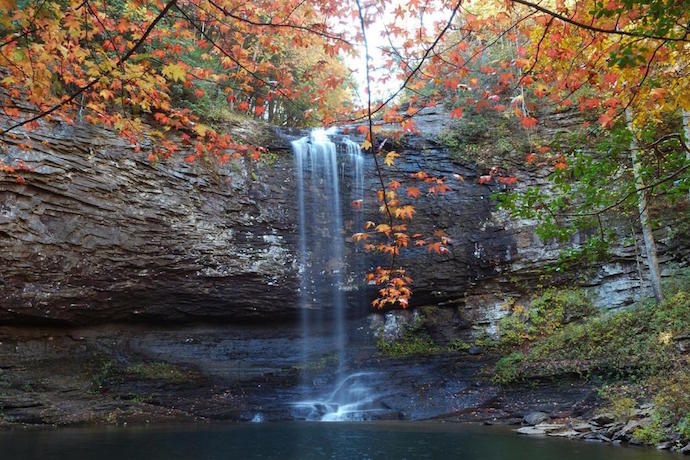
CLOUDLAND CANYON STATE PARK ATTRACTIONS
Waterfalls
The most popular of the Cloudland Canyon hiking trails, the 2-mile round-trip Waterfalls Trail starts at the park’s Main Trailhead in the day-use area.
The trail descends quickly, with the impressive Cherokee Falls about a half-mile in.
From there the hike becomes more strenuous, with 600 stairs taking you another half-mile into the canyon’s depths to Hemlock Falls (not to be confused with the Hemlock Falls at Moccasin Creek State Park in Rabun County).
Note that the flow of these waterfalls varies: They’re best viewed after recent rains. Also, the metal stairs aren’t really dog-friendly, and the climb back out of the canyon can be brutal on the legs.
READ MORE: How to Get to Minnehaha Falls GA on Lake Rabun
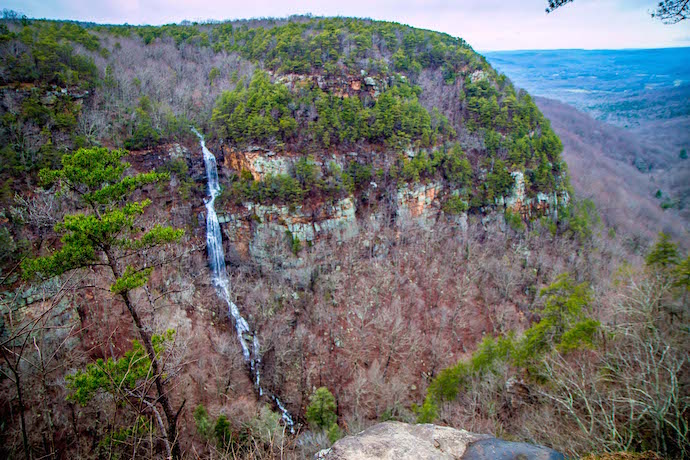
Overlooks
With four scenic overlooks along the West Rim Loop Trail and two more on the Overlook Trail in the main day-use area, Cloudland Canyon offers jaw-dropping vistas at every turn.
The moderately strenuous West Rim Loop was rated by Backpacker magazine as one of the Top 10 Hikes in the US. Gaining around 300 feet in elevation, it’s an exceptional showcase for the park’s rugged geology, with canyons, woodland, and creeks along the way.
The 1-mile Overlook Trail is easier and more heavily-trafficked, with picnic tables, a playground, benches, and the park’s Interpretive Center drawing quite the crowd on busy summer days.
But the breathtaking views it offers of the canyon are arguably the best in the park, with waterfalls, rock striations, forest, and mountains stretching for miles in the horizon.
READ MORE: The 15 Best North Georgia Mountains for Hiking

Interpretive Center
Located in the day-use area, the Cloudland Canyon interpretive center is a great place to learn more about the park’s history, geology, and native plants and wildlife.
There’s some great info explaining how water and erosion shaped the Cumberland Plateau’s dramatic landscape, with Bear Creek and Daniel Creek carving into the canyon over time.
Kids will love the taxidermy diorama, which features native species such as Black Bear, White-tailed Deer, Red Fox, Coyote, Opossum, Skunk, and Wild Turkey.
There’s also info on the various types of snakes, wildflowers, and trees found in the park, as well as a great video on its natural history.
READ MORE: Fall in the Mountains of North Georgia (Where to See Best Fall Colors)
Explore the Five Points Recreation Area
Formerly used for coal mining, the 1,700- acre Five Points Recreation Area was purchased and donated to the state of Georgia by the Lula Lake Land Trust in 2003.
The trust also developed the 14-mile Cloudland Connector Trail (CCT), which offers miles of backcountry wilderness for mountain bikers, long distance hikers, and trail runners to explore.
The CCT, which opened in 2014, can be accessed from four different trailheads, and is also open to horseback riding.
Mountain bikers especially love the trail system’s challenging singletrack routes, which range from moderate and strenuous to technical sections with jumps. –by Bret Love; all photos by Bret Love & Mary Gabbett unless otherwise noted

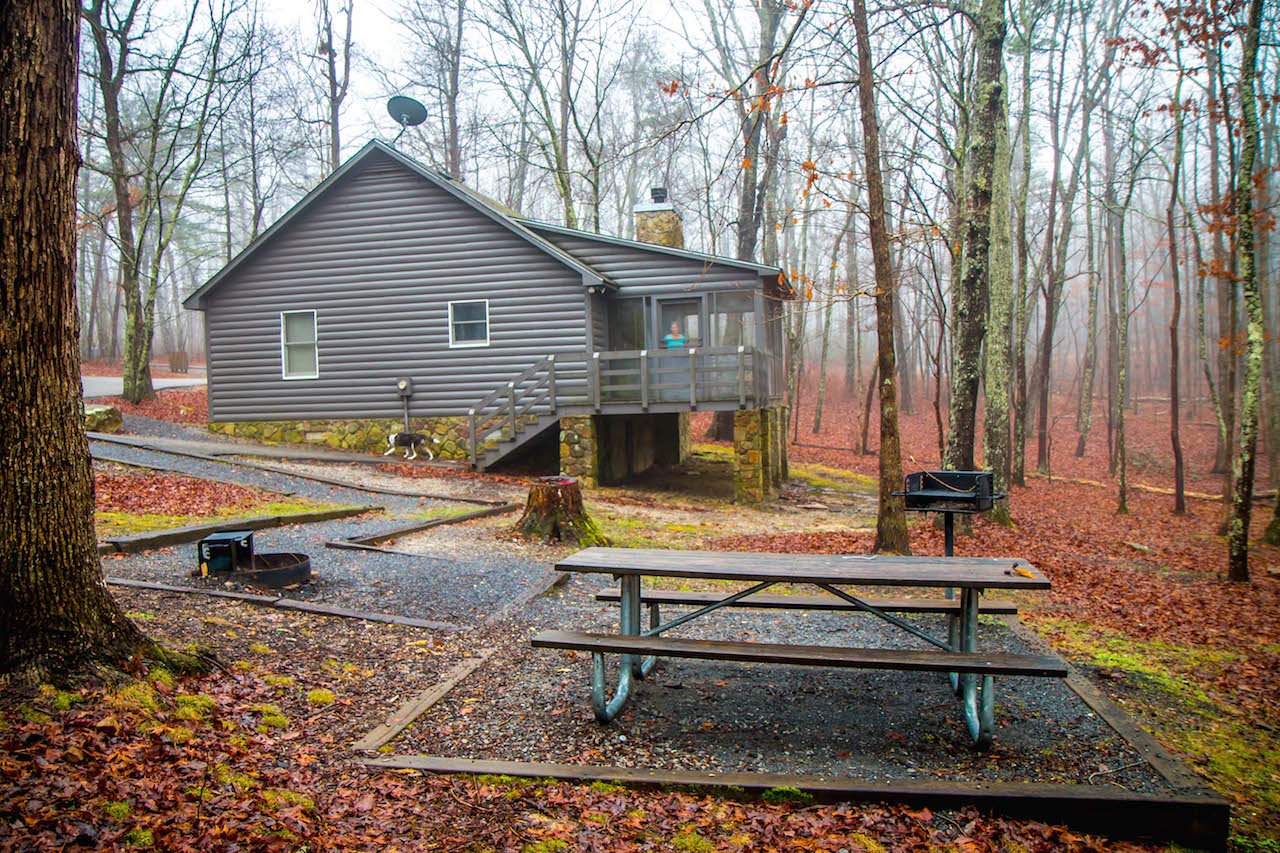

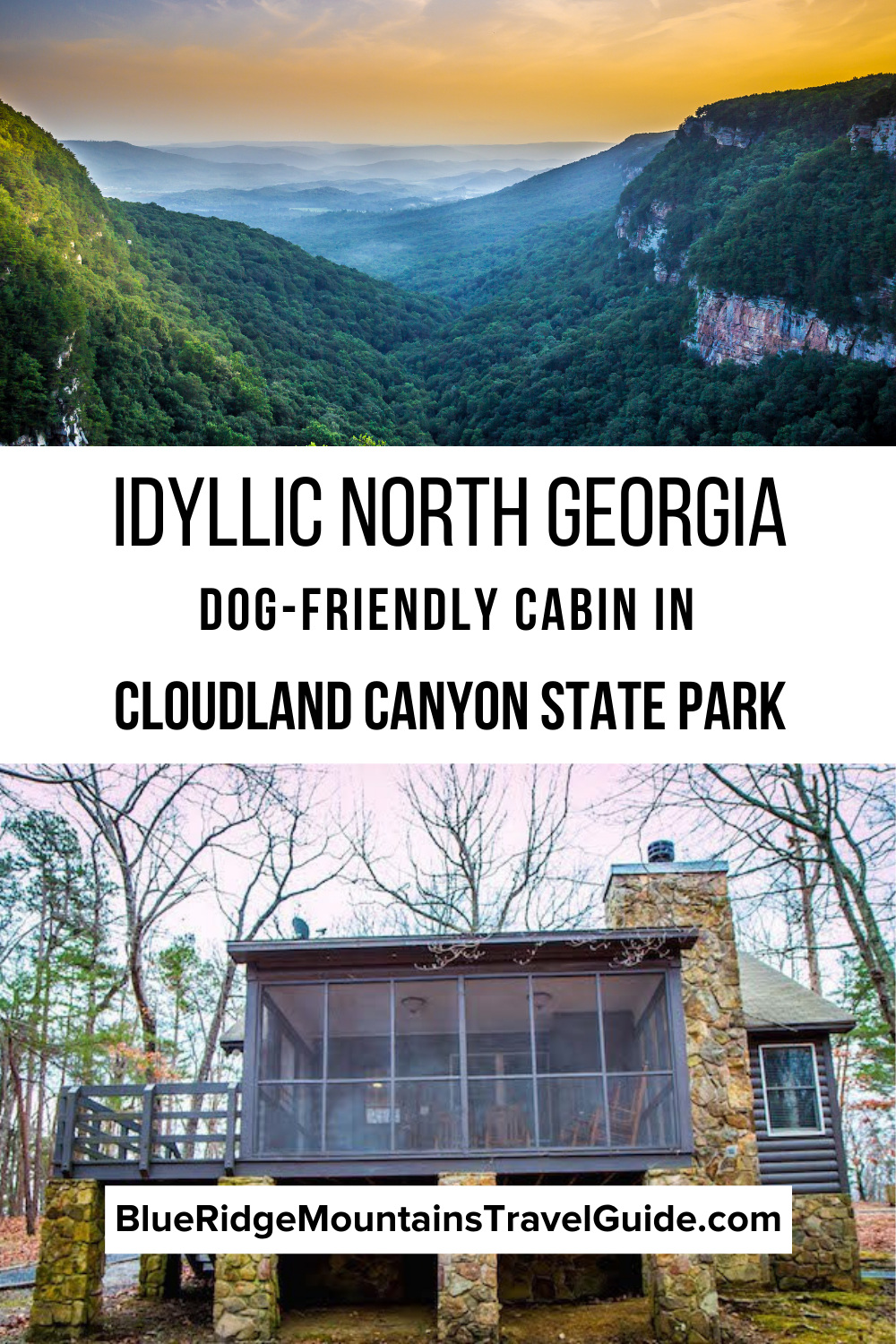
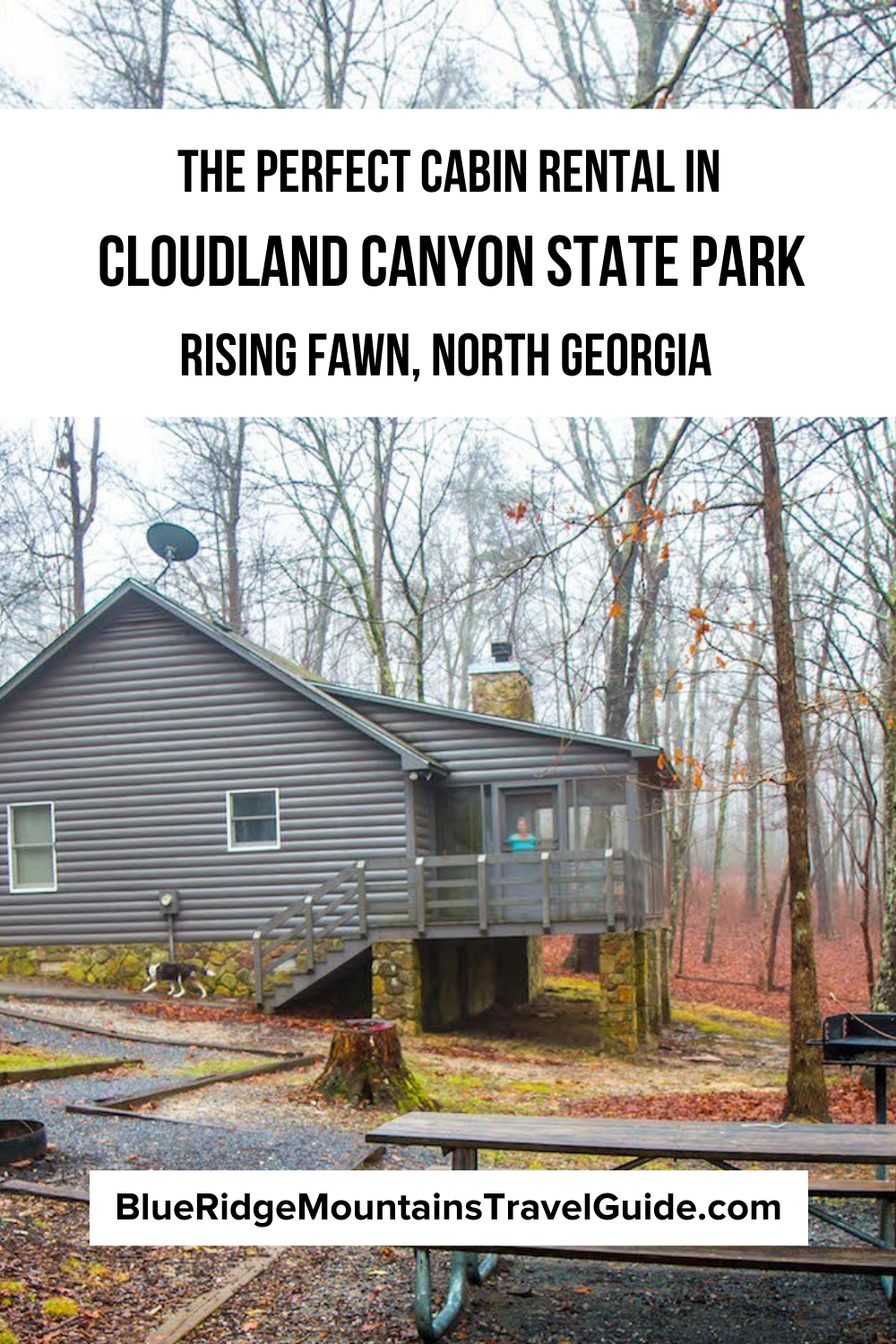

Comments are closed.